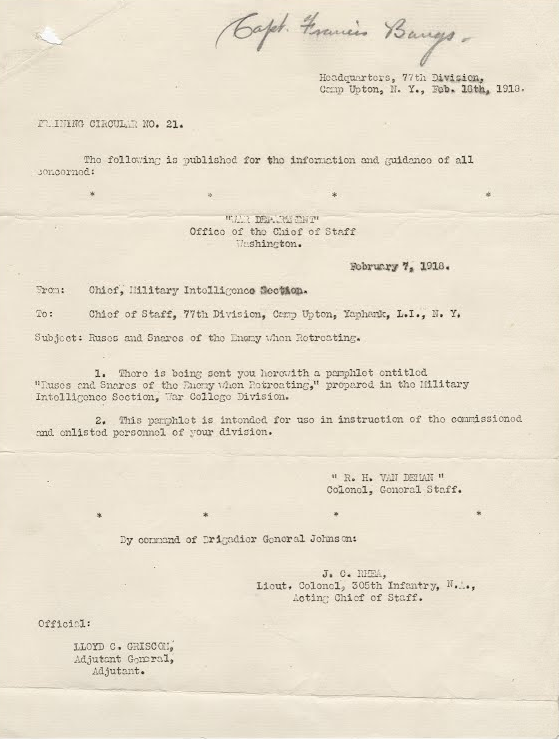Fighting on the Western Front quickly reached a stalemate in World War I, with both sides continuously advancing and retreating to little effect. One day the Allies might take three German trenches, but then would be forced to retreat the very next day.
According to a recently processed document from the archives, some retreating German soldiers turned the trenches into booby-traps, inflicting harm to advancing Allied soldiers. Training Circular No. 21 “Ruses and Snares of the Enemy when Retreating” was used by the 77th Division at Camp Upton in early 1918 to train soldiers before going to France. According to the document, German soldiers set a variety of traps and other sabotage when retreating between Artois and the Aisne. The traps were clever and deadly, such as these snares:
“A window weight is suspended by a string across the entrance of a shelter. When one enters, the string breaks and the weight falls into a box of detonators which fire explosives.”
“Buried hand grenades are connected by telephone wire and explode when the wire is touched.”
“The step of a staircase is put in contact with a nail which touches the primer of a mine.”

Inspect this document to learn more about these creative German snares.
This circular is from the collection of Captain Francis N. Bangs. Captain Bangs served in the 77th Division, Military Police Company as well as in Squad A of the 1st New York National Guard Cavalry, stationed along the Mexican Border in 1916. Visit the Online Collections Database to explore more items from this collection.







